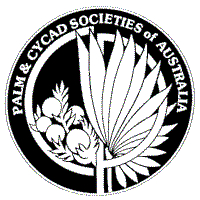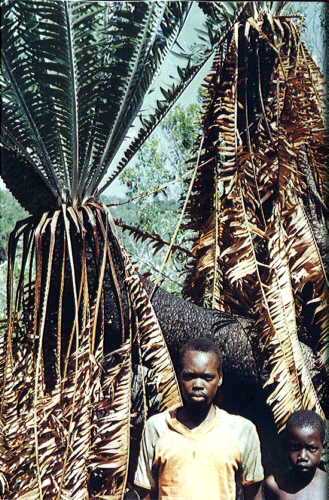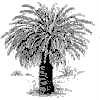|
Book Reviews
Visiting the Cycads of Uganda |

| |||
|
| ||||
|
Encephalartos septentrionalis
This cycad grows in the far north of Uganda very close to the border of southern of Sudan, and close to the town of Moyo. It occurs less than 100km from the colony newly described cycads from the Madi district - E. macrostrobilus . It takes about 2 days to drive from the capital Kampala to Moyo along roads that are quite good by African standards. To reach the area, it is necessary to cross the Nile river by barge. If you miss the barge, you must wait about 3 hours for it to return. Local people travel on it for free, visitors make a donation. We met some soldiers on our trip who obligingly posed for a photo. The main cycad colony we visited consisted of about 200 mature plants, however there are several other colonies around the town in the hills and this cycad is relatively common in the area, and does not appear to be endangered in any way. The climate is hot and dry and the plants grow on low hills amongst granite boulders in full sun. This is a medium sized cycad which has adapted to the harsh growing conditions. Regular fires in the area have blackened many of the larger stems. Limited seedling regeneration takes place because of the hot dry conditions and the frequent grass fires. |

|
|
Encephalartos equatorialis
The landscape around Lake Victoria is fairly fiat, especially in the vicinity of the town of Jinja in Uganda. There are some low hills within 10km of the town which break the otherwise dead flat countryside. These vigorous cycads occur on a single huge granite outcrop around low hills in the vicinity of Jinja and Lake Victoria in southern Uganda, about 1.5 hours drive from the capital Kampala. Over a two year period Paul MacKenzie and I visited this newly described cycad twice. No fertile seed were seen. The population of plants visited consisted of approximately 200 plants growing in dense clumps on depressions and rock shelves on the granite outcrop. Some of the largest plants consisted of 4-6 stems, branching from the base and lying across the rocks. The stems became procumbent after reaching a height of 2 metres. Most of these clumps consisted of mature male plants. There was no evidence of seedling regeneration and no small or medium sized plants were observed, even though the female plants were grow- ing reasonably close to mature male plants. The remains of both male and female cones and infertile seed were observed. It appears the special insect, which pollinates the female cones is now gone. The climate is hot and dry and the cycads were growing in the rotted remains of mulch and leaf litter which had collected in depressions on the granite dome over many years. There was no evidence of fires burning the plants. The stems were 45 cm-65 cm wide and up to 5m in length, and usually procumbent after 2 metres. They formed large clumps of numerous stems and basal suckering was prolific. Most stems carried at least 2 and often 3 successive whorls of leaves forming a dense clump. The leaf bases were irregular and there was little or no wool on the crown. New leaves emerge flesh mid green unlike E. hildebrandtii which tend to have their new leaves emerging an olive green colour. The leaves were 2.5 - 3.5 m long and are held erect like an Encephalartos bubalinus . All the plants were growing in open, exposed positions in full sun on the rock faces in dry, harsh growing conditions. The most exposed plants exhibited an unusual yellowing of the rachis which added to the striking appearance of the plants. We visited a second colony about lkm away on another low rocky hill, only to find 1 huge male plant consisting of many stems.
| |

|
Encephalartos whitelockii
We visted these plants on our first visit to Uganda. The colony was the most spectacular of any we have visited and the habitat could truly be described as the 'lost world of cycads'. These beautiful cycads are at present known to grow only in a rainforest valley along the Mpanga River which empties into Lake George, in Western Uganda. This colony is large plants and very prolific. Huge plants can be seen han from rock crevices on sheer cliffs. There is waterfall and some cycads are even sprayed by the from the falls. Thousands of seedlings were seen. Many plants grow under the canopy of the trees and these have longer leaves and more luxuriant growth. Plants growing in full sun are all within 250 river and are growing in high grass on low hills in soil that appears to be poor. We spent two days amazing area once we had obtained permision from the local chief. |
excerpt from The Cycads of Central Africa, by Peter Heibloem.
 |
 |
 |
 |
 |
 |
||||